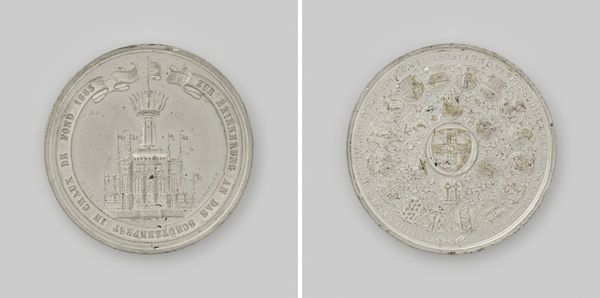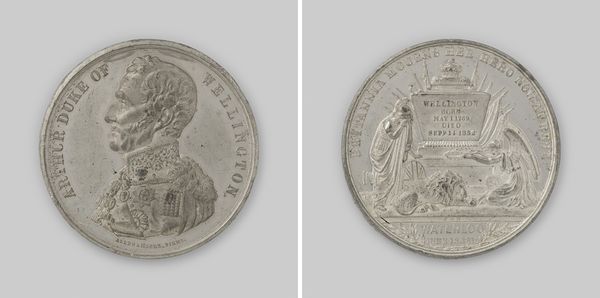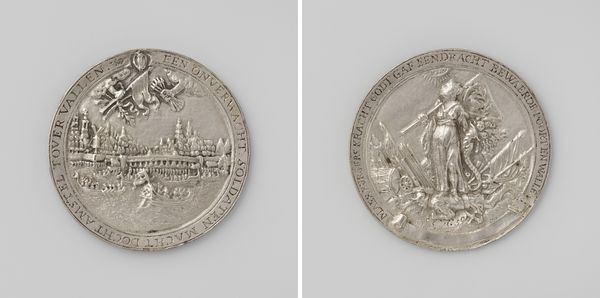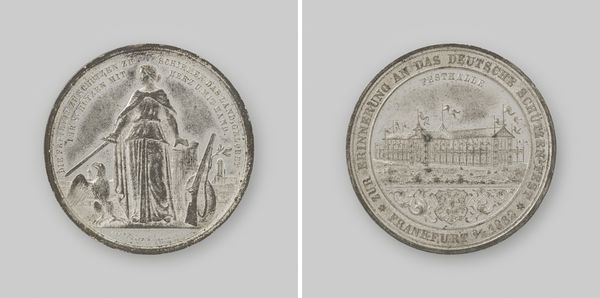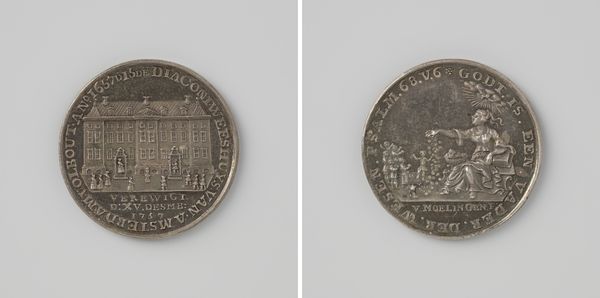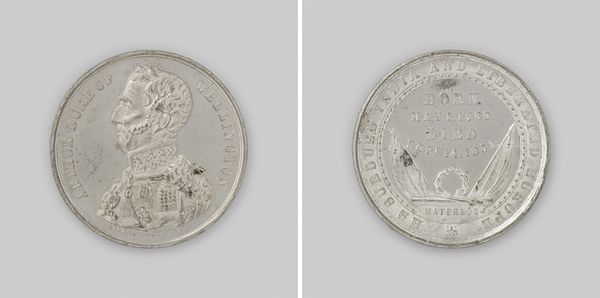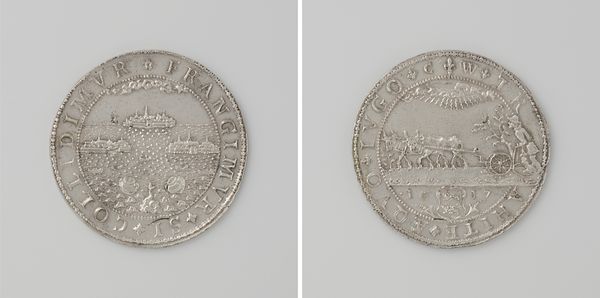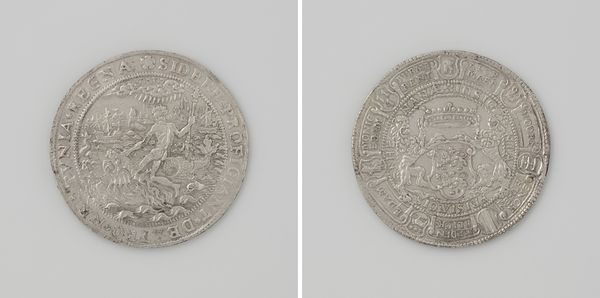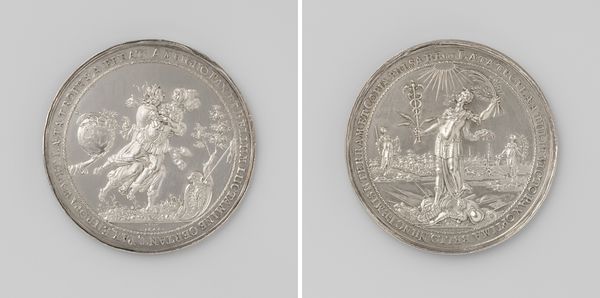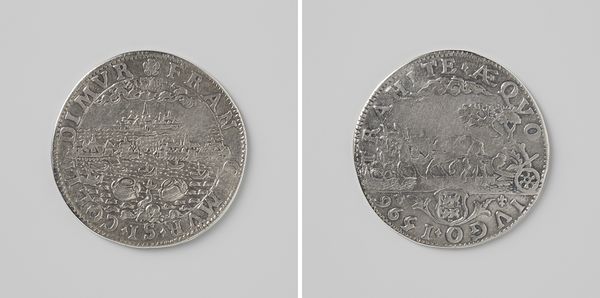
Schoenmakersgilde van Bolsward, overmanspenning van burgemeester Franciscus Elgersma 1727
0:00
0:00
print, metal, relief, engraving
#
portrait
#
decorative element
#
baroque
# print
#
metal
#
relief
#
history-painting
#
decorative-art
#
engraving
Dimensions: diameter 4.6 cm, weight 31.33 gr
Copyright: Rijks Museum: Open Domain
Curator: Look at this silver guild badge from 1727 titled, "Schoenmakersgilde van Bolsward, overmanspenning van burgemeester Franciscus Elgersma" or Shoemakers' Guild of Bolsward, awarded to Mayor Franciscus Elgersma. Its creation is credited to an anonymous artist. The medium is a detailed relief engraving. Editor: Immediately, I’m drawn to the craftsmanship and formality inherent in its design. The circular format and symmetrical compositions evoke a sense of balanced order. Curator: Precisely! Guild badges often served as status symbols. One side features shoemakers diligently working within their shop, symbolizing their craft and collective labor. The guild itself represents cultural memory, a tangible reminder of shared identity, standards, and legacy maintained over generations. Editor: Note the crisp articulation of lines defining both interior space and individual figures, enhanced through what seems to be the engraver's meticulous work. Compositionally, all elements harmonize towards clarity and structured space. Curator: And on the flip side is a very ornate coat of arms and inscriptions, referencing power and the civic duties associated with Mayor Elgersma’s position. Coats of arms served as visual shorthand for family histories and allegiances. This engraving not only reflects an era, it perpetuates it. Editor: It does show a very detailed understanding of heraldic motifs, indeed! There’s an almost obsessive attention given its symmetry, a quality that speaks loudly towards that structured elegance defining much Baroque decorative art—particularly within the metallic medium like silver here which requires extreme care! Curator: Badges like these highlight the interplay between individual work, collective identity, and hierarchical power structures in that time period. These symbols remind viewers who commissioned art, what meanings it conveyed about society then, and how artifacts influence social behaviors going forward even centuries later. Editor: And by extension it's through rigorous analyses across mediums -be they pigment or print - that these intrinsic patterns start to weave richer understanding than stand isolated artworks alone ever might, too! Curator: Absolutely. Each line tells a silent story waiting centuries—perhaps millennium from an analytical listener wanting new insights and awareness gained between artistic mediums throughout art and historical lenses; thank You truly! Editor: Yes, these quiet object speak volume whenever approached equipped towards close reading; insightful experience it offered from Baroque Era.
Comments
No comments
Be the first to comment and join the conversation on the ultimate creative platform.

